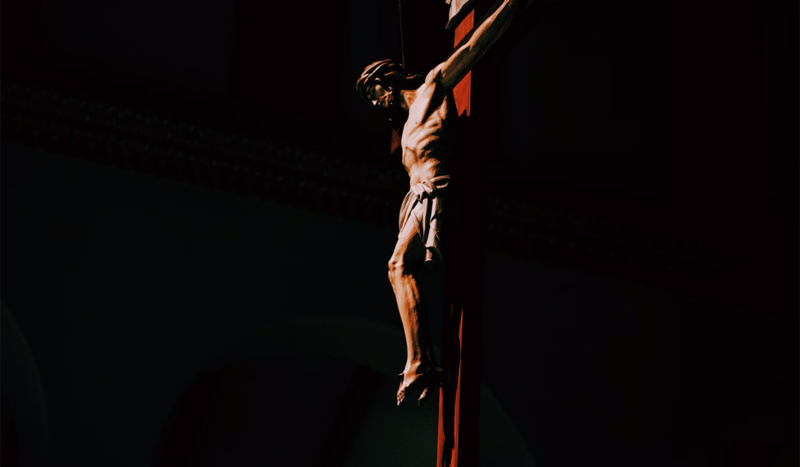
Gianna B / Unsplash
CV NEWS FEED // Good Friday, the day on which Jesus Christ was crucified and died, is observed in Jerusalem in poignant ways such as the celebration of the Passion of the Lord and the “Via Dolorosa,” where the faithful prayerfully retrace the route Our Lord took to the Cross.
Good Friday is the only day on the Church’s liturgical calendar in which Mass is not celebrated. Instead, the day’s celebration of the Passion of the Lord involves the Liturgy of the Word, the Adoration of the Cross, and the reception of Holy Communion, according to an online Breviary.
The Latin Patriarch of Jerusalem, Cardinal Pierbattista Pizzaballa, will preside over a celebration of the Passion of the Lord at 7:15 a.m.
Vatican News reports that 2025 marks the second year that Christians in the Holy Land are celebrating the Triduum amid a war. Cardinal Pizzaballa recently spoke in a video message to the Church of Jerusalem about the importance of celebrating Easter, not only as a right but as a duty, to witness to others “that we belong to the powerful love of God in Jesus.”
He encouraged all people to not be afraid, reminding them that God’s love is more powerful than any darkness.
“Despite everything,” he said, “we want to keep testifying with our life, with what we are doing, what we are, how beautiful it is to live with the Risen Lord, with Jesus.”
Walking the Via Dolorosa
The Terra Sancta Museum states that the Via Dolorosa follows the 14 Stations of the Cross and begins in a courtyard associated with the town governor’s court where Pilate condemned Jesus. The route later stops to reflect on Jesus receiving His cross and then goes to an intersecting street where tradition holds that Jesus fell the first time. The following stations along the road commemorate where Jesus met His afflicted mother, Mary, followed by where Simon of Cryene was compelled to help carry Jesus’ Cross.
The sixth station, which reflects on Veronica wiping the face of Jesus, is observed at the place that, since the 15th century, has been considered to be Veronica’s house. At a later intersecting street, the faithful pause to reflect on Jesus falling for the second time.
“Since the end of the 13th century,” the museum states, “pilgrims have held this spot to be the gate where authorities used to announce and publish court sentences, and through which passed the road to Calvary; hence its name, ‘the Judgment Gate’ (Porta Iudiciaria).”
The path later observes Jesus speaking to the women of Jerusalem and then pauses to reflect on Jesus falling for the third time.
Finally, the last five Stations take place at the Church of the Holy Sepulchre. Here, the faithful follow a stairway in the direction of Calvary, and they pray in sorrow and compassion with the 10th station, recalling how Jesus was stripped of His garments.
Just a few yards further in a mosaic-ceiling nave, the 11th station, the crucifixion of Jesus, is prayed. The 12th station, Jesus’ death on the Cross, follows. The 13th station marks how Jesus was taken down from the cross. The faithful then descend from Calvary to the Sepulchre, where the 14th, and final station, is prayed as participants recall how Jesus was placed in the tomb.
Supporting Christians in the Holy Land
Around the world every Good Friday, the Catholic Church holds a special collection in support of the work of the Franciscans in the Holy Land. These Franciscan friars care for local holy places as well as Christians in the Holy Land, according to the Franciscan Monastery of the Holy Land in America.
“It is vital that we support Christians living in the Holy Land,” the monastery states, “in order to maintain a Christian presence in the very land made holy by the life, death and Resurrection of Jesus.”
Br. Francesco Patton, OFM, Custos of the Holy Land, said in a video appeal that since the outbreak of the war, many families have been affected by unemployment and have struggled to send children to school and afford medical care. He said the Franciscans have struggled to pay the salaries of their teachers and other collaborators. He asked for support in the form of prayer, visits to the Holy Land, and financial aid and requested the faithful around the world remember the Franciscans on Good Friday.

